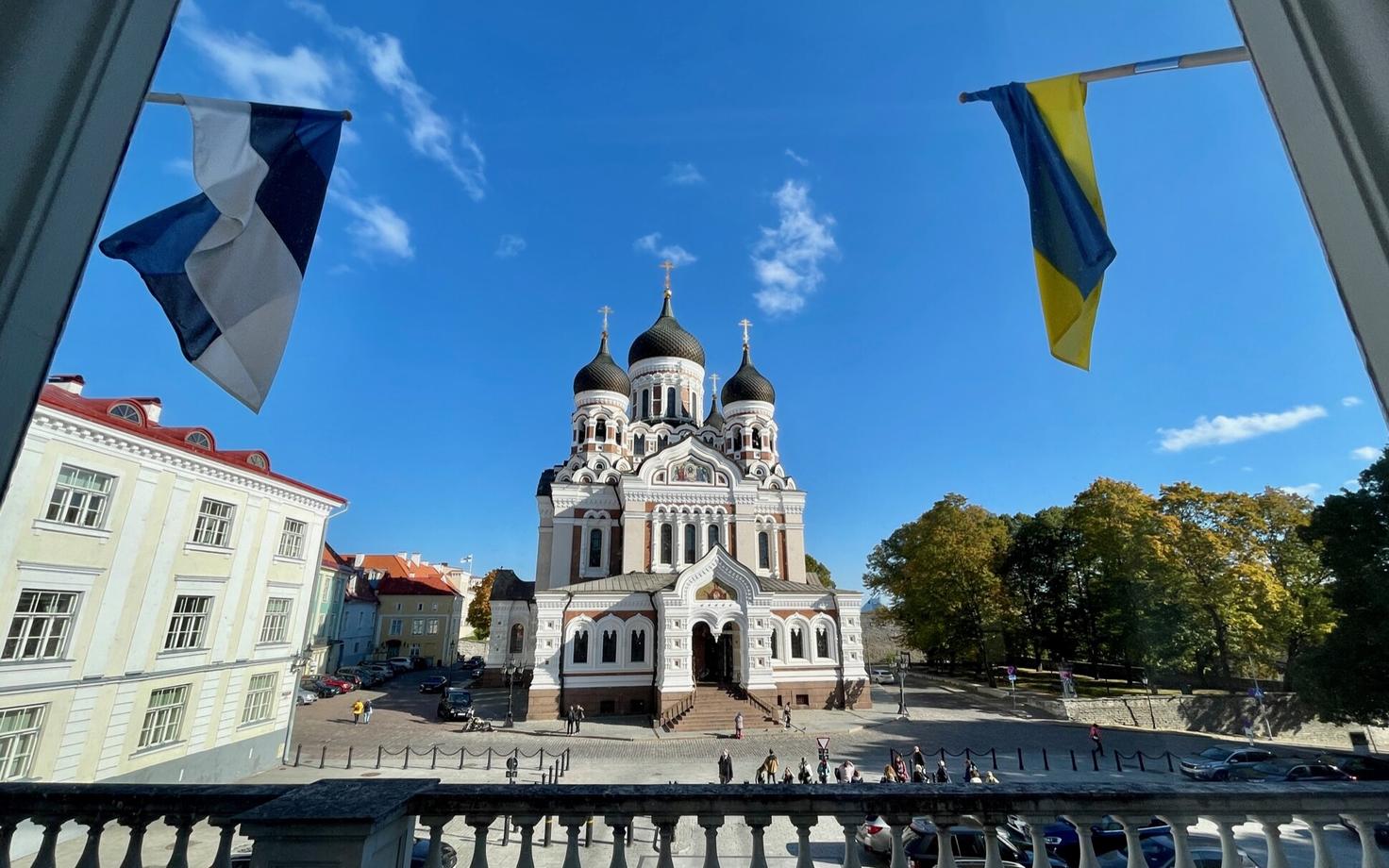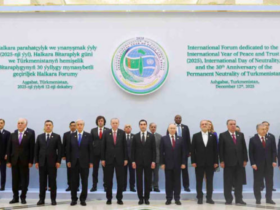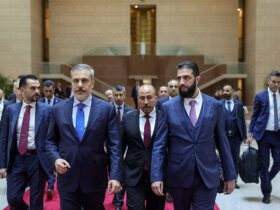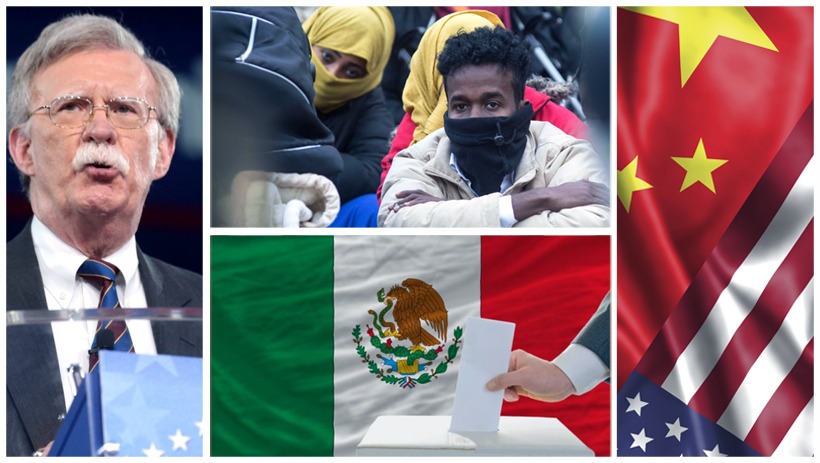Religion in the rivalry and the position of the Fener Greek Patriarchate
Religion in the rivalry and the position of the Fener Greek Patriarchate
The Estonian Parliament has passed a new law aimed at severing ties between the Estonian Orthodox Church and the Moscow Patriarchate. The justification behind the law is the Moscow Patriarchate’s support for Russia’s military campaign against Ukraine. The bill, officially titled as a law for the “prevention of the instrumentalization of religious organizations to incite hatred or violence,” received 60 votes in favor and 13 against in the parliament.
Estonian officials have previously accused the Orthodox Church leadership of approaching Russia with sympathy. Once the law is signed by the president and comes into force, the Estonian Orthodox Church will be legally required to break off its connection with Moscow.
Ukraine had made a similar move in August 2024, banning the activities of the Ukrainian Orthodox Church under the Moscow Patriarchate. This issue also has implications for Türkiye. After the decision, President Zelensky referred to Patriarch Bartholomew of the Istanbul-based Patriarchate as the “Ecumenical Patriarch”. The title denotes the honorary primacy of the Greek Orthodox Patriarchate (Fener Greek Patriarchate) among the autonomous and equal Orthodox churches. However, Türkiye argues that this claim lacks legal basis and contradicts the Lausanne Treaty signed in 1923.
Deniz Berktay, a journalist specializing in Eastern European, shared the background of these developments with “Aydınlık Europe”, the supplement of Türkiye’s “Aydınlık” newspaper in Europe.
We present his views translated into English below.
Religion in the strategic rivalry
Eastern Europe has long been a region of strategic rivalry between the US and Russia. The US seeks to draw these areas into its sphere of influence to encircle Russia, while Russia aims to reassert its influence over territories that were once part of the Soviet Union or former members of the Moscow-led Warsaw Pact.
In this rivalry, both sides have turned to religion. Since the mid-1940s, the Kremlin has collaborated closely with the Russian Orthodox Church in this regard. Again from the mid-1940s onwards, the US has tried to use the Fener Greek Orthodox Patriarchate to bring Orthodox populations in Eastern Europe, the Balkans, and the Mediterranean under its influence. Washington’s repeated demands from Türkiye to lift the requirement for the Patriarch of Fener to be a Turkish citizen, and its insistence on recognizing the Patriarchate as the absolute leader of all Orthodox Christians, stem from this strategy.
Ukraine: The epicenter of the confrontation
The fiercest of this rivalry, both the political confrontation between the US and Russia and the religious rivalry between the Fener Greek Patriarchate and the Moscow Patriarchate, which runs parallel with the US-Russia confrontation is taking place undoubtedly in Ukraine.
Ukraine is the third largest country in Europe by land area and significance for both the Russian people and the Russian Orthodox Church. Russians consider Kyiv to be their first capital in history. In that sense, Kyiv carries immense national symbolism, one might say it holds the same mythic status for Russians as Ergenekon does for Turks. Secondly, the roots of the Russian Orthodox Church trace back to the ecclesiastical structures established in Kyiv in the late 900s. The Pechersk Lavra, regarded as a sacred pilgrimage site by Russian Orthodoxes, is also located there. So, Kyiv holds immense religious significance for Russians. To relate with the words of our cultures, one could say that it is ‘Mecca’ of the Russian people. Moreover, before the war, Ukraine had a population of around 40 million with a vast majority of Orthodox Christians connected to the Moscow Patriarchate.
Thirdly, Ukraine shares a long border with Russia and sits right on its doorstep of Moscow. Russia sees the prospect of Ukraine joining NATO as a direct threat to its national security.
The Fener Greek Patriarchate expands its influence
Although a vast portion of the Ukrainian Orthodox community was affiliated with the Ukrainian branch of the Moscow Patriarchate, after Ukraine became independence in 1991, a number of nationalist priests broke away from the Russian Orthodox Church and formed their own churches. For many years, the Fener Greek Patriarchate refused to recognize these churches. However, in 2018, the Patriarchate declared Ukraine to be within its own spiritual space and brought together the anti-Moscow clerics to establish a new church body connected to itself. This led to a complete breakdown in relations between the Fener Greek Patriarchate and the Moscow Patriarchate. As a result, there are now two distinct church structures in Ukraine, one affiliated with Moscow, and another under the authority of the Fener Greek Patriarchate.”
Against the Lausanne Treaty
Russia’s 2022 attack on Ukraine placed the Russian Orthodox Church in a difficult position, both in Ukraine and across Eastern Europe. In May 2022, the Ukrainian branch of the Russian Orthodox Church announced that it severed its ties with Moscow. However, Ukrainian authorities deemed this step insufficient and have given the Church until June 2025 to prove that it has fully cut ties with Moscow. Meanwhile, churches confiscated from Moscow-affiliated communities in Ukraine are being handed over to communities connected the Fener Greek Patriarchate.
This growing power would make it easier for the Patriarchate to challenge the restrictions of the Lausanne Treaty and claim that it is the leader not only of the Greek Orthodox community in Türkiye but also of millions of Orthodox in Eastern Europe.’
Estonia’s Orthodox community
Estonia has long been a battleground between the two patriarchates as well. In the 1990s, disputes over whether Estonian Orthodox Christians should be affiliated with Constantinople or Moscow brought relations between the two churches to the brink of collapse. The tension was eventually defused in 1997, when the Fener Greek Patriarch and the Patriarch of Moscow reached an agreement allowing for the coexistence of two separate Orthodox churches in Estonia.
Although Estonia shares some similarities with Ukraine in this regard, there are also significant differences. First, unlike Ukraine, Estonia is a member of both NATO and the EU and severed its ties with Russia long ago. Second, while Ukrainians and Russians share Slavic roots and cultural similarities, Estonians are ethnically and culturally distinct from Russians. In fact, most of the Orthodox Christian population in Estonia comes from the Russian-speaking, Slavic minority rather than the country’s ethnic majority. Estonia’s total population is much smaller than Ukraine’s, around 1.3 million, and a large portion of it is atheist. Orthodox Christians make up roughly 16% of the population, and the majority of them are affiliated with the Moscow Patriarchate.
With the Russia–Ukraine war, a process similar to that in Ukraine, but even stricter, has begun in Estonia. The Estonian Orthodox Church affiliated with the Moscow Patriarchate has already removed the word ‘Moscow’ from its official name. However, the Estonian Parliament has now passed legislation requiring this church and its affiliated communities to prove, within two months, that they have completely severed all ties with Moscow. If they fail to do so, the state will have the authority to confiscate their church buildings.
Although not explicitly stated, it is likely that the properties from these communities will be handed over to the Estonian branch of the Fener Greek Patriarchate. In this sense, the Russia–Ukraine war is enabling the Fener Greek Patriarchate, being backed by the West, to expand its influence in the region. For this reason, an end to the war is also essential from Türkiye’s perspective.
Cover: Alexander Nevsky Cathedral, seat of the Estonian Orthodox Church of the Moscow Patriarchate in Tallinn. Source: Siim Lõvi/ERR

















Leave a Reply